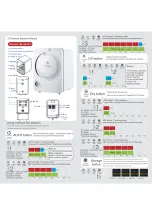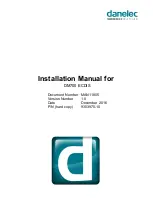
GE M
EDICAL
S
YSTEMS
PROPRIETARY TO GE
D
IRECTION
2294854-100, R
EVISION
3
LOGIQ™ 9 P
ROPRIETARY
M
ANUAL
5-20
Section 5-3 - Front End Processor
5-3-5-2Receive Signal Processing
•
Edge Enhance
- The edge enhance filter block enhances the high frequency components of high
amplitude signals corresponding to edges of structures. The filter coefficients will vary with different
rate conversion on B or M vectors, due to depth or display size differences (including zoomed and
dual images), or due to operator selection. The small reference image for zoom will not use edge
enhance. The basic approach for edge enhance is to high pass filter the data and sum it back in
with the unfiltered data, with multipliers to allow variable weights (gain1, gain2) on the filtered and
unfiltered data. The high pass leg of the filter can be a function of the amplitude of the delayed all
pass leg. This is accomplished using a LUT.
•
Multi-transmit Splicer
- the splicer block is used to piece together sections of data from incoming
vectors. During multi-transmit focal zone imaging it is used to extract the regions in vectors which
surround the transmit focal depth. It extracts and combines groups of these higher focus regions
into single output vectors. It smoothes the transitions regions between these segments so as to
hide the edge effect which would otherwise be created by the combining of different vector data
sets.
5-3-6
EBM, EBM2 Board
The EBM Board was used on forward production units starting with BT’02 (November 2002). The EBM2
Board was used on forward production units starting with R3.0.0 Software (BT’03 October 2003). The
detailed functionality is found in the previous EQ and BMP sections.
5-3-6-1
Overview
The EBM/EBM2 board is the data path interface board between the last Time Delay board (TD) and the
Scan Control Board (SCB). The EBM/EBM2 receives data from the Time Delay boards, processes the
data for depth attenuation effects, and passes the data on to the BM processor, then to the Scan Control
Board. This board is composed of two main sections the Equalization (EQ) and the B/M Mode
Processor (BMP).
The EQ section compensates for the attenuation of ultrasound in tissue. The attenuation of ultrasound
in tissue is usually modeled as being linearly dependent on frequency and depth. The EQ section
provides two major data processing functions to compensate for this phenomenon, Time Gain Control
(TGC), and Time Frequency Control (TFC). Using TGC and TFC, the EQ ”equalizes” image signals by
removing depth dependent attenuation effects from the signal, hence the name ”equalization” board. In
layman terms, the EQ gives a point deeper in the body an equal opportunity to contribute to the
ultrasound image as one closer to the body’s surface.
The BMP section process IQ Vectors from the EQ to create B and M mode vectors. This design is
composed of 12 major blocks; Synthetic Aperture, Axial Interpolator, Detector/Vector Compounder,
Smoothing Filter, Rate Converter, Dynamic Range Compression, Edge enhance, Splicer, B–Mode
Output, M–Mode Output, Vector Configuration and the PCI Interface.
5-3-6-2
Modes of Operation
The EBM/EBM2 equalization design section supports two input data buses from the final summer of the
TD board set. The two buses are referred to as the I and Q data buses (or pipes). Each two’s
complement bus is 24 bits wide and passes data from the final TD board to the EBM/EBM2 board.
Different system modes of operation cause the two data pipes to handle data in different ways. The
EBM/EBM2 board transfers output data to the Scan Control Board over two, two’s complement sixteen
bit I and Q buses. Internal EBM/EBM2 board data pipes are sixteen bit two’s complement format.
















































